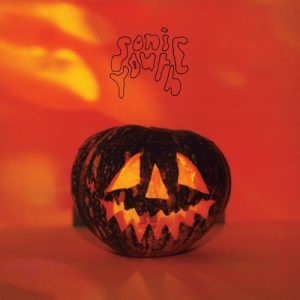 Back in the day, when ingress to a gig was gained by a small paper ticketi, on leaving the venue at the conclusion of the show, eager band fans would often scan the reception booth or desk hoping to spot where these tickets had sometimes been piled into a little stack, and swipe one – or indeed whole handfuls – as a souvenir. Later, whether shoved haphazardly into an old shoebox, or pasted with loving care into a designated and chronological album, this musical palmarès was a source of immense pride.
Back in the day, when ingress to a gig was gained by a small paper ticketi, on leaving the venue at the conclusion of the show, eager band fans would often scan the reception booth or desk hoping to spot where these tickets had sometimes been piled into a little stack, and swipe one – or indeed whole handfuls – as a souvenir. Later, whether shoved haphazardly into an old shoebox, or pasted with loving care into a designated and chronological album, this musical palmarès was a source of immense pride.
Leaving the Main Hall at Manchester University’s Student Union building on the evening of 20 March 1989, I did exactly this, grabbing a couple of tickets in order to paste them into my diary. Well over three decades later, I can still remember vividly my thoughts as I did so: “One day this band are going to be like The Velvet Underground, totally revered, and it’ll be important to show you were there.” A little too self-conscious? Quite possibly? Prescient? Most definitely.
Sonic Youth had been outstanding that night, touring the Daydream Nation album, a fearsome wall of skronkily tuned guitars, battered Converse All Stars, and effortless Big Apple kool. It really was into the groovy. My conversion to the Sonic Life had come a few years earlier, when my friend Richard had played me Evol, and the world had shifted on its axis. Despite an already fierce love of music, it felt as though suddenly a door had swung ajar, and the thing that I had been waiting for – even if I hadn’t known it consciously – had stepped through to greet me.And I certainly wasn’t the only one. The arc which Sonic Youth described, from their formation in the roiling cauldron of post-No Wave New York to their final triumphant elder statesmen performances, took underground (guitar) music into the mainstream, opened the doors for the world-conquering grunge and Nirvana to walk through,ii and created an oeuvre which others are still copying years after the band themselves finally called it a day.
And in all that time, they barely put a foot wrong, nor betrayed anything that they had stood for from their first days. Even as a callow youth, I recognised greatness that would not fade. And just as no one will ever make a film like Eraserhead again, no matter how hard they try, similarly the frequencies which came from Sonic Youth’s guitars are a lost technology now, like the building of the pyramids.Walls Have Ears, a semi-official bootleg from 1986 reissued now through the Goofin’ label, documents the band during one of these transition points: leaving their first period and entering their second. Capturing three live UK sets from the preceding year – one from April 1985 in London with the mighty Bob Bert behind the kit, the second also from London the following October featuring then new boy Steve Shelley, and the third from the band’s legendary (and rather chilly) gig on Brighton beach in November – not only is the band starting to move into their second phase, expanding their musical boundaries and gathering new admirers, but the addition of Shelley has stabilised their line-up and added a calm, more motorik and anchoring effect both musically and personallyiv. Indeed, this is the line-up that would endure (with some in-out additions such as Jim O’Rourke and Mark Ibold) until the band’s conclusion in 2011.
Although their collective nose was rather put out of joint by the release of Walls Have Ears – it was, after all, unsanctioned – contained within its fiery orange pumpkin cover, the album nevertheless remains an early jewel. Some inspired unofficial curation has caught ferocious live interpretations of an hour and a half worth’s of material culled from their first two albums and some which would appear for the first time the following year on Evol. Particular stand-outs must surely be “Brother James”, “Expressway To Yr Skull”, and, inevitably, “Death Valley ‘69”, here with protracted two-minute intro and relentless Formula One velocity. Any bugger can riff big on sixty-four digital tracks with endless ability to tune and tinker and achieve ‘perfection’. This is done on cheap guitars, live, with cold fingers and no assistance. You can really hear the effect of the band’s love of DC hardcore, Minor Threat, The Faith et al, giving the band’s leftfield avant-garde aesthetic a massive transfused dose of immediacy and sheer power.Listening to Walls Have Ears is the perfect reminder of the live Sonic Youth experience: the power, the uniqueness of sound, the sheer bloody exhilaration. Over the years it would change, both with the addition of new material, and in response to the maturation of the band themselves – think thirty-five-minute renditions of “The Diamond Sea” – before their final show in Sao Paulo in 2011v.
The marriage of Thurston Moore and Kim Gordon was such an integral part of the Sonic Youth’s existence that, with its dissolution, it is hard to see how the band could possibly have carried on in the aftermath. But all things must pass, and the band’s massive catalogue and enduring influence on modern guitar music remain for us to revel in. Like The Velvets before them, Sonic Youth’s role in the history of New York’s thrilling contribution to modern music is now enshrined, a history the band both helped to curate so diligently and to expand artistically.It’s so easy to be complacent about something when you have it, but even a dozen years later, the loss of Sonic Youth still leaves an aching absence. They were a product of a unique set of complementary forces at a certain time and place, one which cannot now be replicated. That pattern just won’t repeat. Walls Have Ears, thankfully, allows us to revisit Sonic Youth’s unique and energetic abandon any time we want to, and for that we must be extremely grateful.
Don’t kill yr. idols.
-David Solomons-
i The thrill of a trip to Stargreen Box Office on Argyll Street W1.
ii As well as turning their fans on to a huge variety of other bands and artists. Thurston telling Snub TV that “if you were really smart, you’d talk to John Zorn” gave me the vital in to the great man. It was down to Decoy Records the very next day.
iii On 4 July 1999, the band’s instruments and stage equipment were stolen during a tour in California. Almost thirty guitars and basses were nicked, and the band were forced to start again from scratch. Happy Independence Day! The outcome, though, was the incredible NYC Ghosts And Flowers album – a joyous result for us, if not for them.
iv When Michael Rother announced his Hallogallo: Plays the Music of NEU! show in 2010, my mind boggled at who could possibly have the temerity to step into Dinger’s shoes behind the kit without rousing hoots of derision from Kamp Klaus. Steve Shelley, you say? Oh, OK then, fine.
v The final time I saw Sonic Youth was at The Scala in London in April 2009. It was the best I ever saw them play, which was in itself an absolute joy.



